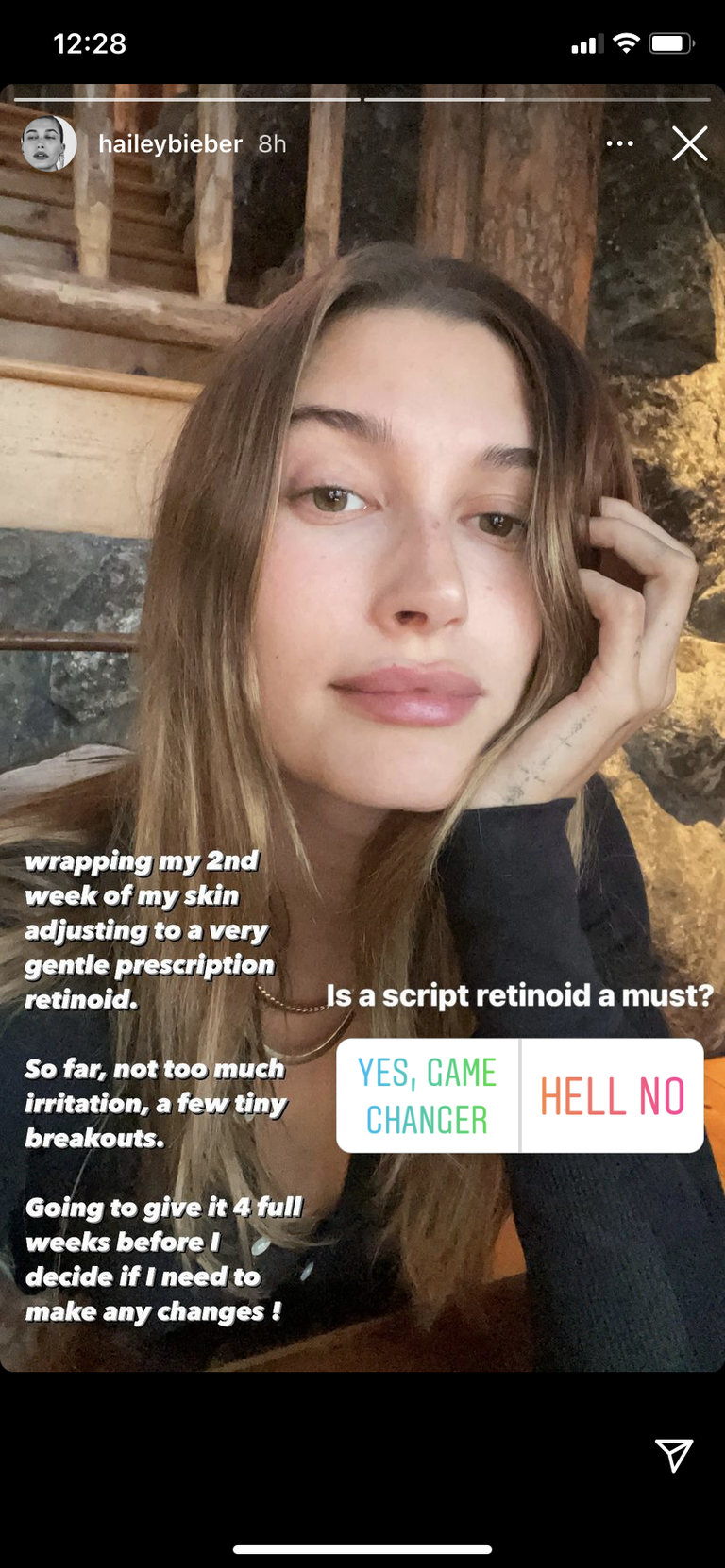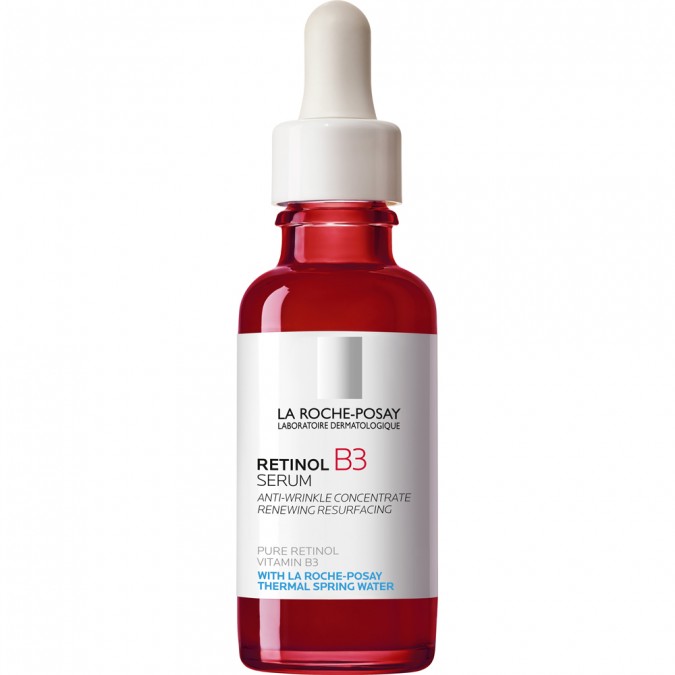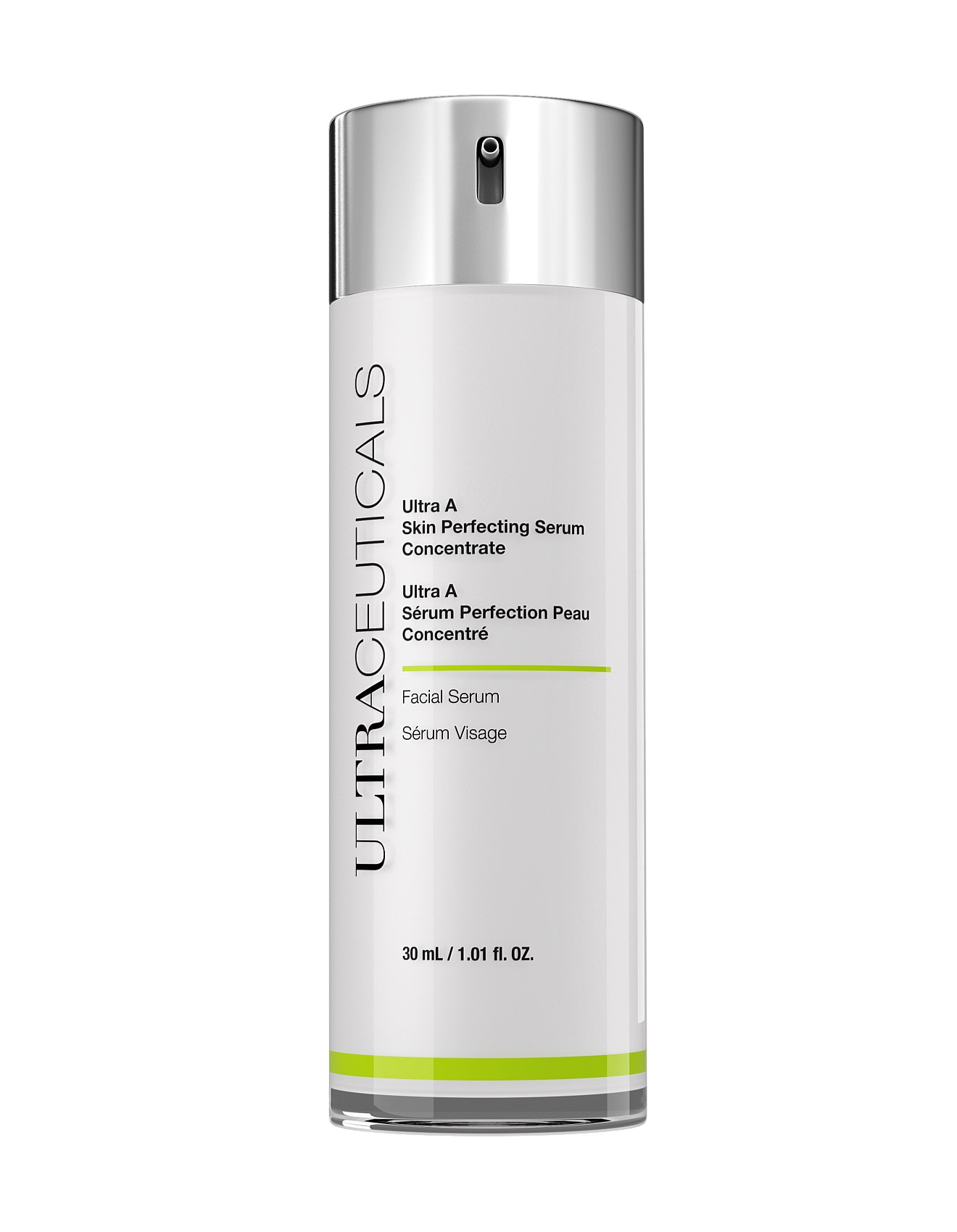
While some celebrities are reticent when it comes to sharing the inner workings of their actual skincare routine (ahem, Jennifer Lopez), Hailey Bieber is refreshingly open.
She’s been vocal on Instagram and YouTube about her love affair with all things skin — and while this is probably the PR machine hard at work to generate hype for her suspected brand — Bieber is definitely a beauty girl who calls on more than just olive oil for her immaculate complexion.
Her latest share was that she’s “just wrapped her second week using a gentle prescription retinoid.”
Retinoids are a derivative of vitamin A — the blanket vitamin that comes in many forms and is lauded in skincare as it speeds up cellular turnover, in turn helping with a myriad of skin issues like acne, congested pore, fine lines, wrinkles, tone and texture. Some are only available via prescription from a doctor or dermatologist because of their strength and potential side effects. Bieber has been vocal about using vitamin A products in the past — this is just her taking things up a notch.

What constitutes prescription vitamin A?
This actually differs depending on where you are in the world, but in Australia certain retinoids aren’t available over the counter — some you might have heard of include tretinoin, isotretinoin and adapalene. Instead, you need a script from a professional who will be able to educate you on how to best use it.
What’s the difference in the retinol chain?
Dr. Michele Squire, a PhD-qualified scientist, science educator, and founder of QR8 Mediskin, tells us that vitamin A in the context of skincare usually means retinol or any of the retinoids, which are any compound derived from vitamin A. These include: retinaldehyde or retinyl esters like retinyl palmitate, retinyl acetate, retinyl propionate.
The key difference between them all is how many “steps” are needed so that the vitamin A can have an actual affect on the skin. Those that don’t require any changes (as in, they are able to bind directly with receptors in the skin) are forms of retinoic acid and therefore have a more dramatic effect, and can work to treat complex skin concerns.
If there were a vitamin A food chain, it would look something like this: retinoic acid > retinaldehyde > retinol > retinyl esters.
There’s no “best” form, it more depends on your skin conditions and the results you’re hoping to achieve.
How do I Use It?
Bieber has most likely gotten her script from a dermatologist who knows her skin. If you are someone who has exhausted OTC vitamin A and wants to try something stronger, speak to your dermatologist, or try an online service like QR8 Mediskin, where you’ll be connected with a doctor virtually who can put together something personalized and educate you on best practice.
For those new to vitamin A in general, or those with mild skin concerns, you can still see amazing results from OTC options. When introducing something new to your routine, be sure to start slowly (once a week) and build it up as your skin adjusts. Also, be extra diligent with sun protection as some vitamin A products can increase photosensitivity.
Shop the Vitamin A edit:
 La-roche posay Retinol b3 Serum, SHOP NOW
La-roche posay Retinol b3 Serum, SHOP NOW
This serum comes with both retinol and retinyl palmitate plus niacinamide to mitigate any irritation.
 Drunk Elephant A-Passioni Retinol Cream, SHOP NOW
Drunk Elephant A-Passioni Retinol Cream, SHOP NOW
This retinol is also packed with plant oils, so is a good option for dry skin.
 Ultraceuticals Ultra A Perfecting Serum, SHOP NOW
Ultraceuticals Ultra A Perfecting Serum, SHOP NOW
This retinol serum is relatively strong, so a great choice for seasoned users.













